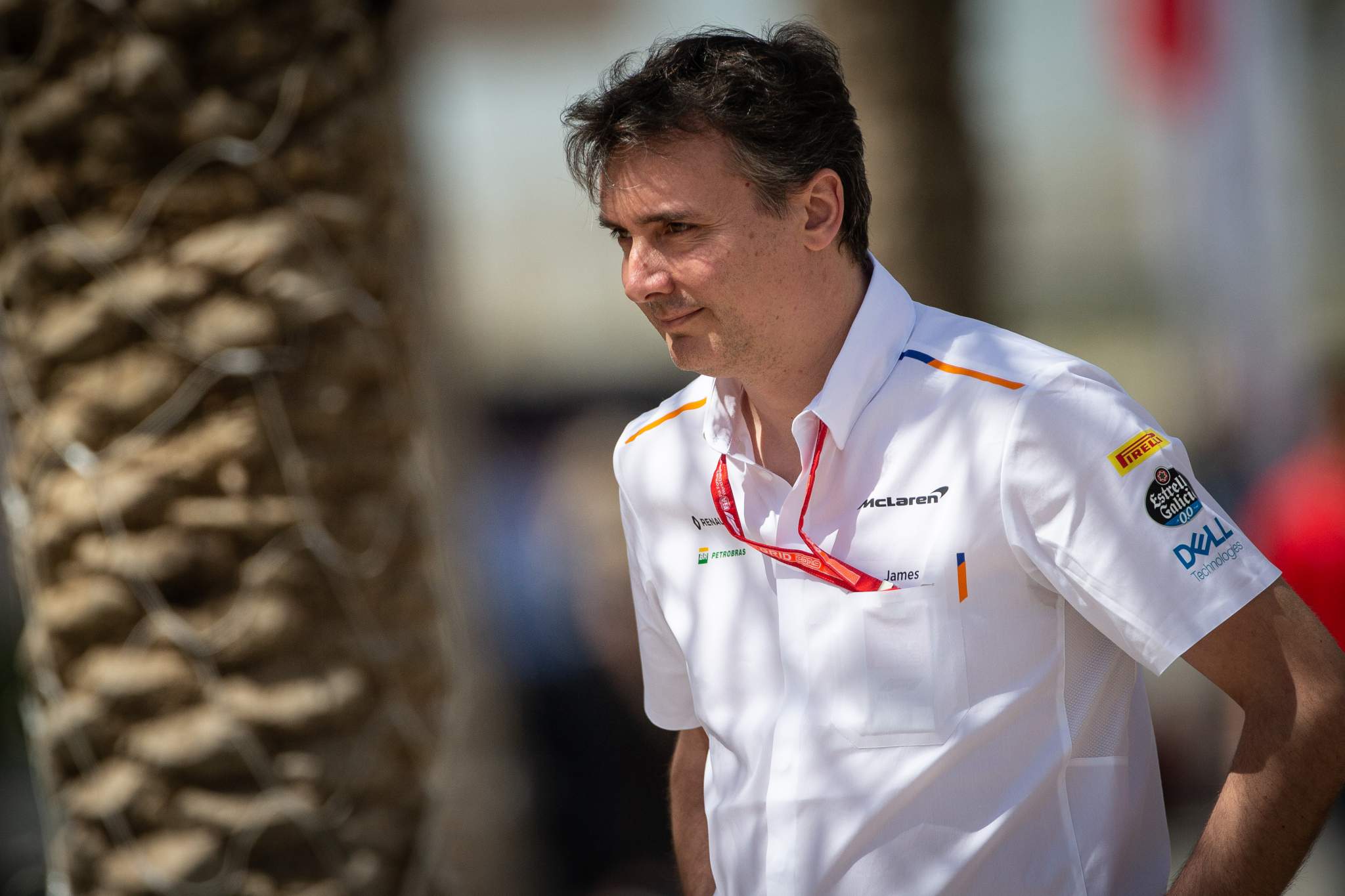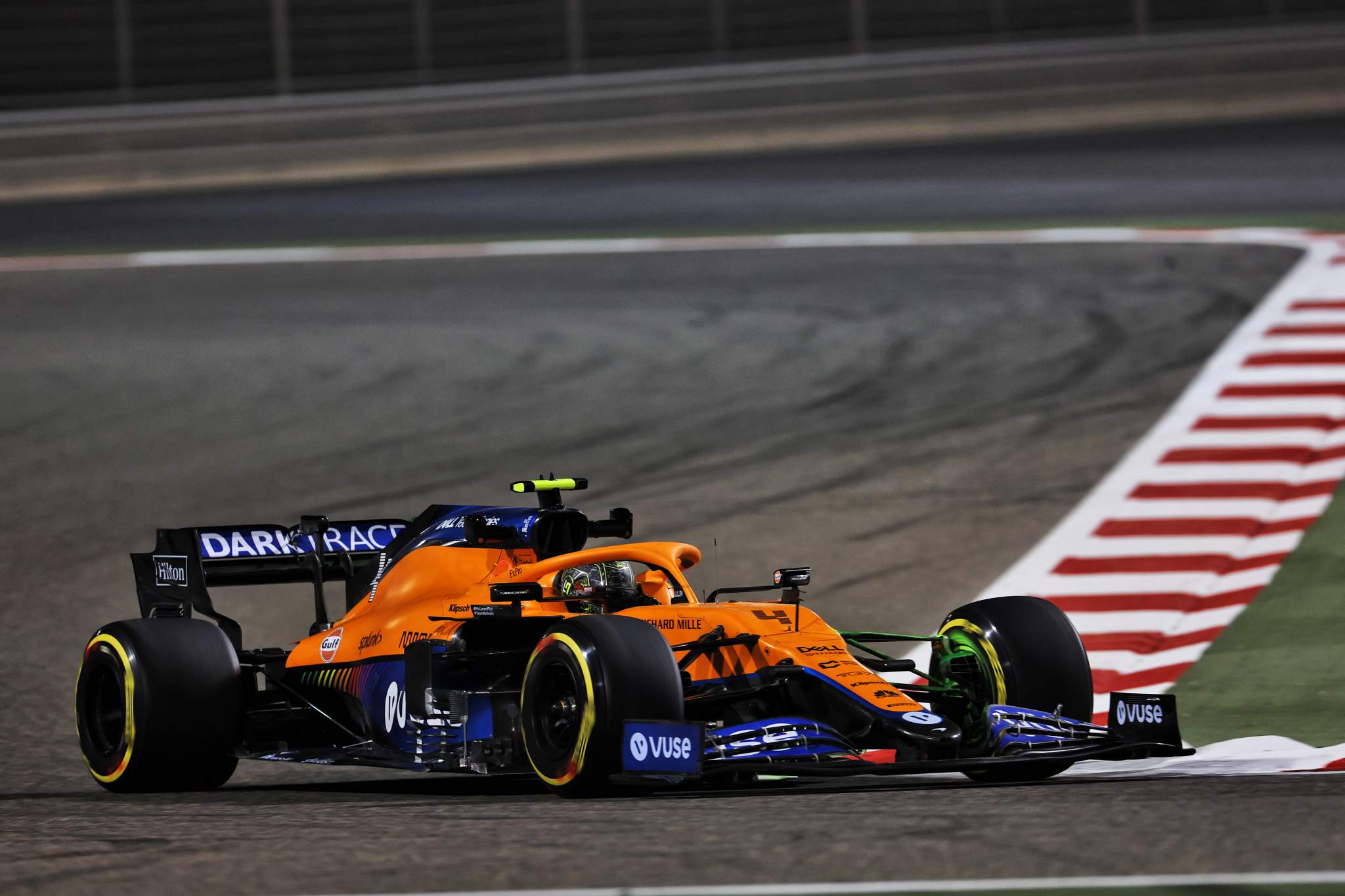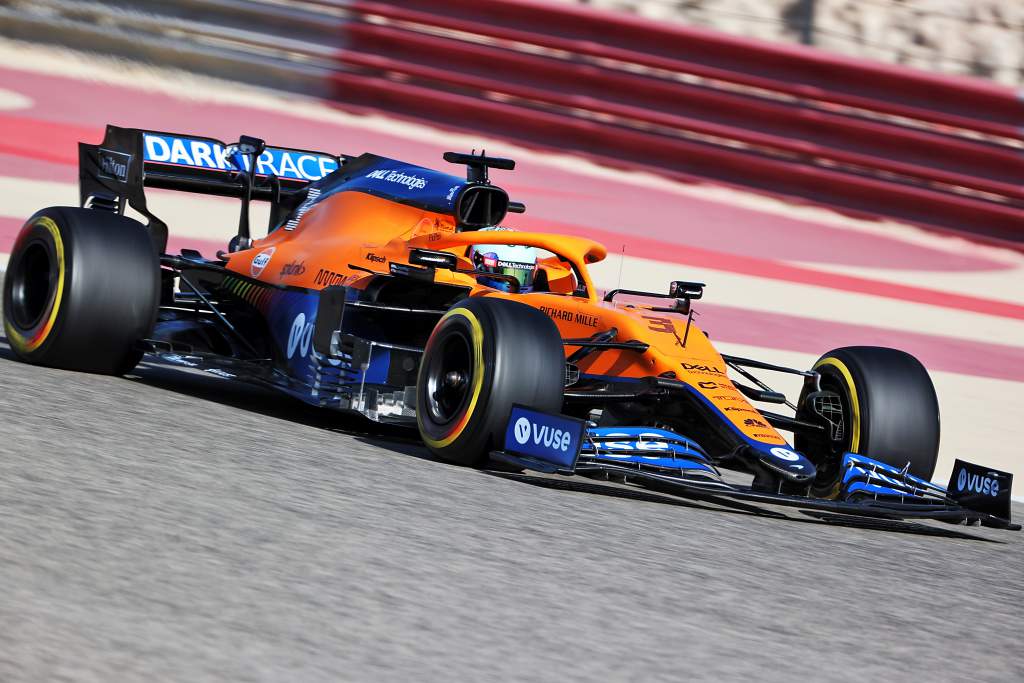Up Next

McLaren faced a unique challenge among the 10 Formula 1 teams heading into this season given the need to incorporate the Mercedes power unit into a carryover car originally designed around the Renault engine.
Yet despite a cautious approach in testing and modest headline lap times, you can make a strong case that it’s the best-placed of the midfield teams heading into the Bahrain Grand Prix weekend.
Given how closely-matched the midfield pack was last year, when it was covered by just a few tenths of a second on average pace, and the fact that testing suggests it will be a similar story in 2021, the competitive picture in this area of the grid is muddy.
But what is clear is that McLaren has avoided the potential pitfalls of having to change engine supplier.
The McLaren was the seventh-fastest car in testing in terms of headline lap time and fifth on adjusted pace but still behind midfield rivals AlphaTauri and Alpine.
But as Lando Norris put it, the car was never at “low fuel and full beans” and its poise on track suggests McLaren has done an effective job of switching to the Mercedes despite the limitations imposed on it.
While its overall mileage was only eighth-best among the 10 teams, with 327 laps logged, there were no significant problems.
Technical director James Key attributed this smoothness to the programme McLaren ran, but did admit the team was cautious in its approach.
The McLaren MCL35M had managed a pair of 100km promotional days of running at Silverstone last month, but Bahrain was the first time in anger. That, combined with the fact McLaren had what Key called “extra boxes” to tick thanks to the engine change, had an impact.
“There was an element of caution there to a certain extent, in that this was the first time of actually putting proper laps together in dry conditions and with some challenges that a proper race circuit in these conditions would give us,” said Key.
“So there was a little bit of step-by-step to begin with. There’s no negative reason for the lap count, it’s more to do with the fact that we swapped drivers every day, which always has a timing implication.
“We also tried to split our time between data-gathering, which can be time consuming sometimes, and just sticking miles on the car.
“You’d like to put a lot of miles on the car immediately but if you do that, you don’t necessarily get all those little tests done, which typically we started our day with.

“So it has been planned. Of course, we’d like to maximise mileage, but the programme we’ve had has ticked a lot of boxes that we needed to tick. And we’re in a slightly unique situation compared to others, where perhaps we had some extra boxes this year to tick with a new engine.”
McLaren is restricted this year in that the engine change meant it had to sacrifice its development tokens. The team has admitted that had it had these available, it would likely have used them at the rear given it had already changed its nose concept shortly before the homologation cutoff last season.
It did, however, produce a diffuser design that differed from the rest, albeit through a straightforward reading of the rules.
But given the modified aerodynamic rules and the switch of engine, enough changed about the car to mean that it could have suffered dynamically. Based on trackside observations and driver feedback, it seems no such problems have arisen.
“It was a very good car to start off with,” said Norris of the McLaren after his running was complete in Bahrain.
“From the first lap we did, we felt very confident and could push a lot. To try to unlock that final extra bit that you really need come qualifying, we have still got to go through everything. We haven’t gone low fuel and full beans.
“But in terms of going out and just feeling like you can push the car to a good limit and within a reasonable pace, I’m very happy. From day one, we’ve managed to do that, we’ve not had any big problems.

“On the other side, we have to understand the car a little bit more, how to set it up perfectly and put it in the right aero characteristics with these changes, the new floor and so on. We have to get our heads together to understand how to extract those last two or three tenths that we’re going to need.
“So it’s a bit of both, we’ve got a bit of work to do but for a car that you could just put down on the ground and drive out of the garage, it’s pretty good.”
While the car’s behaviour at the absolute limit in qualifying trim hasn’t been tested, Norris’s comments are encouraging. Last year, the McLaren was very wind sensitive but it wasn’t as badly affected as many other teams by the problematic wind during testing last week.
Norris also described last year’s McLaren as one of the trickier to drive on the limit. Although he hasn’t completed a qualifying simulation, the fact the McLaren feels and looks so assured is a positive sign. In the midfield pack, only the AlphaTauri looked a shade better on track – and it is believed to have run closer to qualifying trim than McLaren did.
The performance advantage of the Mercedes engine should also help compared to last year, while new signing Daniel Ricciardo has settled into the team well. Most importantly, he got the mileage he craved on the final test afternoon in the best of the conditions.
Inevitably, the team will not and cannot jump to conclusions about where it is in the pecking order. While all things considered it had the most impressive test of the midfield group given the added dimensions of the challenge it faced, small differences are likely to top the balance between vying for the ‘Class B’ victory and being outside the points.
“You don’t really know until you go into that first qualifying session where everyone is,” said Key. “It is very difficult to tell, we’ve got tyre spec, engine modes, the state of the track at the time that lap was set, the spec of the car, there’s so many variables.

“For us, it’s been a case of looking at ourselves, making sure we were comfortable with the steps we were making during the test and ticking those boxes. Making sure of the reliability of the engine installation is critical for us and Mercedes.
“So a good test for us this year has been to get through those three days and make sure that mechanically we’re sound and we’ve understood the car reasonably well.
“It hasn’t been a bad test, but exactly where everyone is, it’s very difficult to say.”






